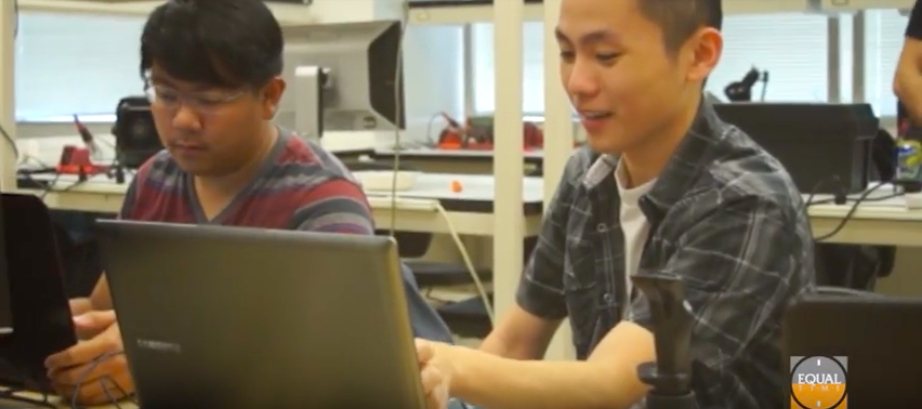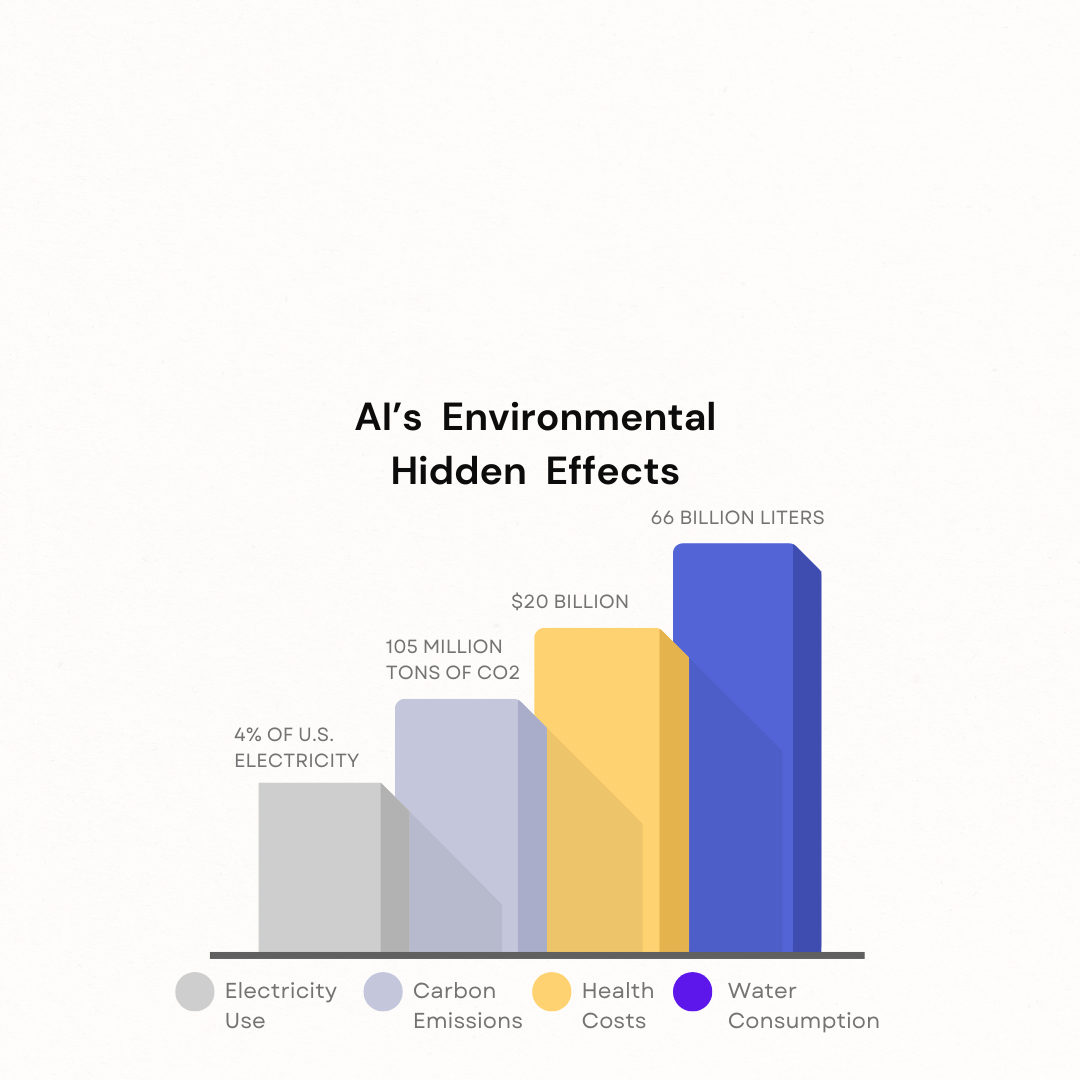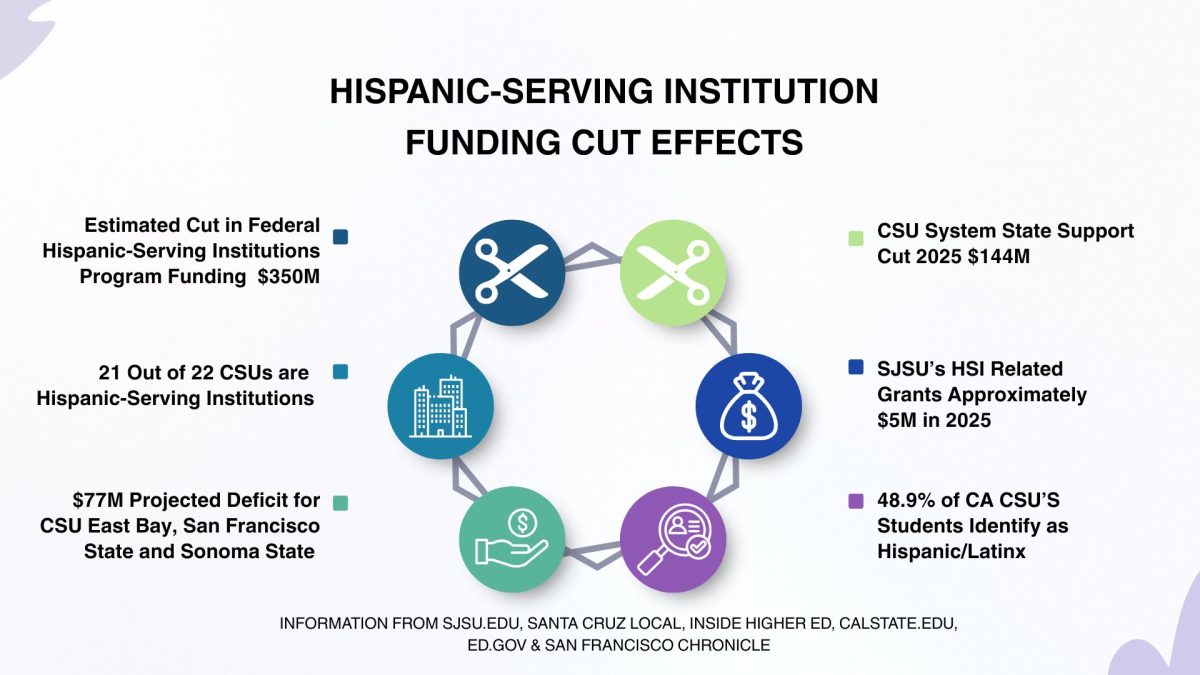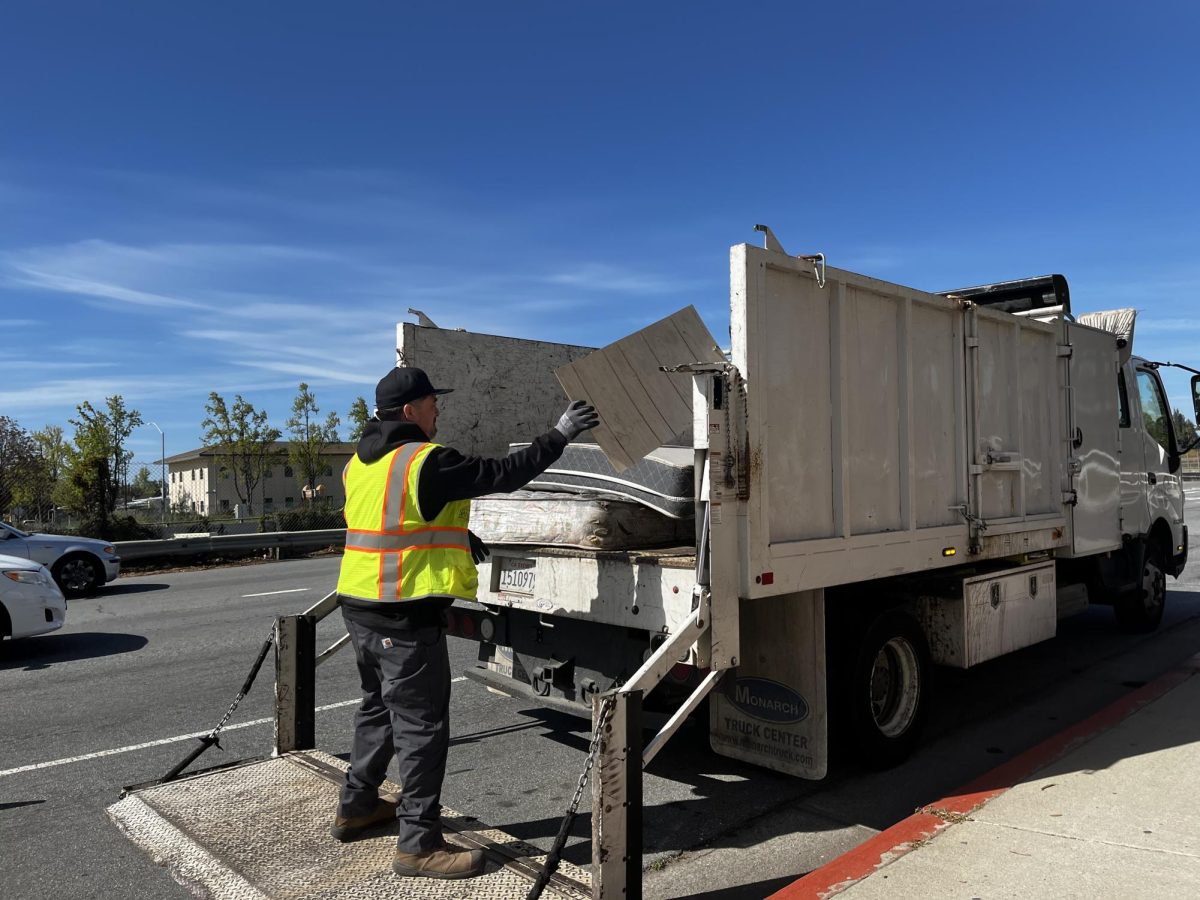San José State University’s embrace of artificial intelligence through its “AI Everywhere” initiative has made tools like ChatGPT a common part of students’ everyday life – however, concerns may be emerging over the environmental cost of AI and its ethics.
When we told Natalie Ramirez, a third-year environmental studies student, the environmental impact AI has, she said she was not aware and its something she had actually never thought of before.
“People love using ChatGPT or AI art but don’t really think about what’s happening behind the screen,” Ramirez said. “I’m guilty of this too, I didn’t even know…it wasn’t until recently I saw a TikTok explaining…data centers…need tons of electricity and water.”
U.S. data centers (which is where AI is trained and used) used more than 4% of the country’s electricity last year, according to a study done by Cornell University.
Over half of that energy came from fossil fuels like coal and gas and these centers released over 105 million tons of carbon emissions into the air.
In other words, this study means more pollution, more climate change and potentially more health problems.
Jared Lyon, a second-year computer science student, says he uses ChatGPT quite often.
“I use ChatGPT a lot for studying, but I honestly never put thought into how it’s even run. It’s kind of wild to think…doing a TikTok trend can use up a…ton of water and power,” Lyon said.
As explained on The Verge, on TikTok there is a popular filter called “AI greenscreen” which lets users type in a name or phrase, and the AI will create an image unique to the request within seconds.
Under the hashtag #aigreenscreen, millions of these videos have been shared, turning AI image generating into a viral trend on TikTok.
According to HPE Juniper Networking, the cooling of AI servers is necessary to prevent them from overheating.
U.S. data centers used more than 66 billion liters of water, much of it pulled from areas where water is already scarce, according to a study done by the Smithsonian Magazine in 2023.
These effects go beyond water as well, a recent paper by Cornell University found that AI-related air pollution could cost the U.S. as much as $20 billion per year in health impacts by 2030, especially in communities which already struggle with pollution.
However, some students still think AI could be a part of a solution, if used correctly.
Emily Landaverde, a third-year environmental studies student, believes the impact of AI depends on its consumption.
“I think it depends on how we use it…if AI helps make things more efficient or cuts down waste, that seems like a good thing,” Landaverde said.
AI could help reduce emissions by making industries more efficient, according to DataCentre.
This can be done through managing power grids, improving public transportation, or predicting climate patterns.
It is estimated that AI could help cut over 5 billion tonnes of carbon dioxide, each year by 2035, if used responsibly.
The university recently launched its “AI Everywhere” initiative, led by President Cynthia Teniente-Matson, according to the SJSU initiative website,.
This plan aims to prepare students for a future where AI is embedded in nearly every career field.
The initiative includes new curriculum development, faculty support, and students resources to promote responsible and innovative use of AI technologies, according to the same source.
But not everyone is on board with how AI is being rolled out at SJSU.
In a piece published in the San Francisco Chronicle, Morgan Sanchez, a teaching assistant and sociology instructor at SJSU, called out the university’s rapid embrace of AI.
In the article, Sanchez described how he tested ChatGPT by feeding it basic assignment prompts, and the AI produced a decent paper in seconds.
“I don’t think we need to stop using AI completely, but we should at least be aware of what it’s doing to the planet…first thing we can do is learn what is really going on,” Ramirez said.











































